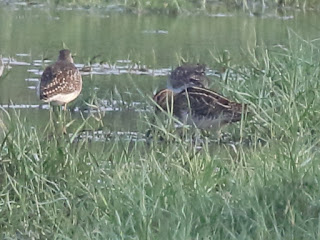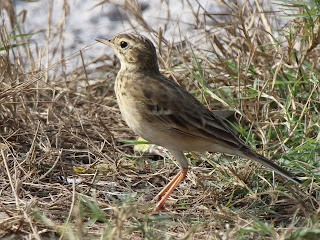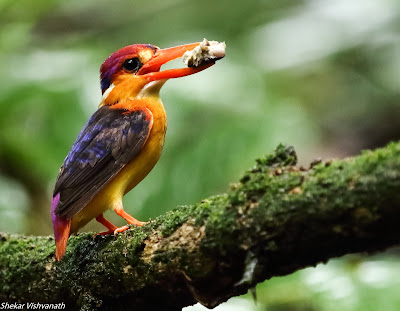Monsoon rejuvenates life in this part of the country after a hot, humid and sultry summer season. It initiates breeding season for many bird species that are mostly resident.
The ODKF , which may not be resident, makes the most of this season from finding a partner to mate, building its nest, waiting for the eggs to hatch, indulging in a frenzy to feed its hatchling for 14 days till the hatchlings become adult and fly away to unknown destination hoping to return during the next monsoon season to repeat the same process.
During this time the bird photographers in this part of the country obsessively stake out this bird for a Wah Wha photo session . This bug caught on to me too and finally I got my chance, albeit bit late in the season. I made quite a few attempt but none of them were very fruitful. Ultimately came across a place near Karnala and ventured out recently on a rainy day to fulfill my wish.
The guide who was managing it, told me to come to a spot few miles after the national park entrance gate. Then took me through the slush and mud on a half an hour trek , crossing a small stream couple of times to his spot. There he had constructed his green hide to facilitate crazy bird photographers to quench their thirst for Wah Wha photos. His makeshift hide accommodated about five persons. All of them looking out eagerly for that elusive bird.
The bird did not disappoint us. It gave me a darshan 30 minutes after I sat down with my equipment and gear. It had come quietly and sat on a perch in front of the hide with a skink in its beak while I was watching crabs on the forest floor. The camera rattle from other photographers diverted my focus from crabs to this star attraction of the day enabling me to click a photograph which is shown second in this blog.
The ODKF had built its nest further away from our hide. The nest was basically a hole into the steep bank near a stream in a forest understorey. The male and female birds would come separately but regularly in a frequency of 20 to 30 minutes. The male would directly fly to the nest, discharge its cargo into the eager beak of its hatchlings and fly back without perching any where in this whole process.
But the female on her way to the nest would land on the perch for a minute or so probably to catch breath and then fly over to the nest to discharge the cargo and then fly out non stop. This activity goes on for several hours.These birds, whose size probably smaller than our palm, would fly low , zip across very fast, often carrying a prey quite big for their size in their beak.
I observed that each time these birds bring something for their hatchlings without fail. I saw it bringing skink, crab, spider, frog etc. It seems that its hatchlings have a voracious appetite and gorge. It is said that the ODKF hatchlings grow very fast due to this feeding frenzy very fast and leave the nest after 14 days .
So far I have not come across its sighting in this part of the country after the end of monsoon season till the end of summer. As a result I guess it is migrating to some far off place.





































